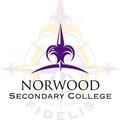Arts

Arts/Visual Communication
Aims/Objectives:
- To deliver a balanced and stimulating Art/Visual Communication curriculum that offers students a sound foundation for future learning
- To provide opportunities for all students to acquire and apply a broad range of skills and knowledge, to communicate effectively and to think creatively, critically and reflectively.
Content:
In Year 7, students investigate visual art practices as inspiration to explore and develop themes, concepts and ideas. They are introduced to the art elements, art analysis and they are encouraged to reflect on and display their work. Emphasis is on experimenting and building on existing art, literacy and numeracy skills. Students begin to analyse artwork and express their ideas. Using the art elements as a common thread, students complete artwork using a variety of techniques such as painting, drawing, printing, ICT software and ceramics.
In Year 8, the students again employ the art elements to create and develop their ideas. The emphasis is on the use of proportion, scale, perspective and composition. The students build on their artistic experiences from Year 7 and set individual goals to show improvement and build confidence. The students are introduced to the design process, reflection, creative thinking and problem solving. They are exposed to artwork from different cultures, movements, times and places. Artwork produced may include printmaking, collage, ceramics, painting and drawing.
These two units have been purposely designed to meet the Victorian Curriculum levels 7 and 8 and to give our students a wide range of challenging experiences, skills and knowledge to prepare them for the art electives offered in Year 9 and the VCE subjects that follow.
Tasks/Activities:
In all study areas, students will produce bookwork and assignments. In Art and Visual Communication, students will create 2D and 3D pieces designed to develop and demonstrate their individuality by solving set creative problems.
Student Assessment:
- Class activities/Practical work
- Visual Diary entries
- Art Analysis
- Research tasks and Reflections
Drama
Aims/Objectives:
The Drama curriculum is designed to foster curiosity, imagination and playfulness, and to develop practical and embodied skills, while also cultivating theoretical knowledge and capabilities. Students learn to
- interpret and use the language of traditional and contemporary drama, theatre and dance
- analyse movement and drama techniques
- conceive, perceive and embody ideas
- create meaning and engage audiences
- explore, depict and celebrate human experience
Content:
Junior Drama provides knowledge and skills in the areas of communication, teamwork, problem solving, initiative, planning, self-management, and learning, skills that are transferable to a variety of artistic, social and work-related contexts.
All students at Years 7 and 8 complete a semester of Drama. In these classes, students are encouraged to extend their self-knowledge and co-operative skills.
Students learn from traditional and contemporary performance styles to devise their own work and apply elements and conventions for specific audiences. They also learn to respond to and evaluate their own work and that of others.
Students also incorporate the study and practice of Dance within the Drama course. They explore dance elements and styles from diverse cultures, times and places, and learn skills and choreographic techniques to create work that expresses ideas and meaning.
Tasks/Activities:
Exploration of the basic elements of movement, mime, voice, ensemble performance, collaboration and devising work.
Student Assessment:
- Performance Assessments
- Class participation and preparation
Music
Aims/Objectives:
- To introduce students to the basic elements of Music through listening, performance and using Music software programs
- To offer students a broad over-view of musical styles and appreciation.
Students have two periods per week for a semester of Classroom Music in Years 7 and 8. Students are encouraged to participate in the Instrumental Program and join ensembles. The Instrumental Music lessons operate on a rotating basis, once per week.
Content:
Students are to develop skills in listening, composing, and performing music. They learn basic music notation and this skill is developed by participation in elementary keyboard classes, ukelele and using interactive keyboard/theory games. General Classroom Music at Year 7 includes a study of orchestral instruments, film composers and the music of various cultures including Aboriginal and Torres Strait Islander peoples. At Year 8 level, General Music includes Musical Theatre and contemporary music (Jazz, pop, rock etc.) from the 1950s onwards, as well as further performance practice and an introduction to music technology.
Tasks/Activities:
- Class performances: Singing and rhythmic accompaniment and keyboard melodies
- Individual performances: Keyboard melodies - played hands separately and together
- Students use computer programs for composition and learning basic theoretical concepts
- Composition - both individual and group tasks
- Activities: Discriminating between sounds of pitch, rhythm, instrumentation, and musical styles.
Student Assessment:
- Performance tests in Keyboard, Percussion and Ukulele
- Group performance in a variety of styles and improvising over 12 bar blues structure
- Written tests, listening activities, composition and improvisation, using music software, research assignments, workbooks and participation in class
